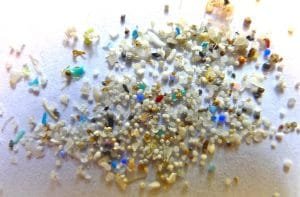How can fashion be pollution?

Synthetic fabrics contribute to pollution at multiple stages of their life cycle. From production to use and disposal. Making them a significant environmental concern.
Fashion = pollution.
Synthetic fabrics, such as polyester, nylon, and acrylic, significantly contribute to pollution in several ways:
I’m addicted to sweaters. Soft, sometimes fluffy, always wonderful. And, depending on the fibre used, – polluting.
1. Microplastic Pollution

When synthetic fabrics are washed, they shed tiny plastic fibers known as microplastics. These fibers are too small to be filtered by most wastewater treatment plants, so they end up in rivers, oceans, and other bodies of water. Microplastics can accumulate in marine ecosystems, harming aquatic life and entering the food chain, eventually reaching humans.
2. Petroleum-Based Production
Most synthetic fabrics are derived from petroleum, a non-renewable resource. The extraction, refinement, and processing of petroleum release large amounts of greenhouse gases, contributing to climate change. Additionally, the production of synthetic textiles requires significant amounts of energy and chemicals, further adding to environmental pollution.
3. Non-Biodegradability
Synthetic fabrics do not biodegrade easily. When they are discarded in landfills, they can take hundreds of years to break down. During this time, they release harmful chemicals and microplastics into the soil and water, contributing to long-term environmental degradation.
4. Energy-Intensive Manufacturing
The process of creating synthetic fabrics is energy-intensive. Large amounts of energy are required to produce and process these materials, leading to higher carbon emissions compared to natural fibers like cotton or wool. The reliance on fossil fuels during manufacturing amplifies the overall carbon footprint of synthetic textiles.
5. Chemical Pollution
The production of synthetic fabrics involves various chemicals, including dyes, solvents, and finishing agents. These chemicals can leach into waterways during the manufacturing process, contaminating water sources and harming local ecosystems. Even after production, some chemicals may remain in the fabric and slowly release toxins over time, contributing to indoor pollution.
So, how can fashion be less polluting? See our list of Synthetic fabrics and the more sustainable alternatives.
